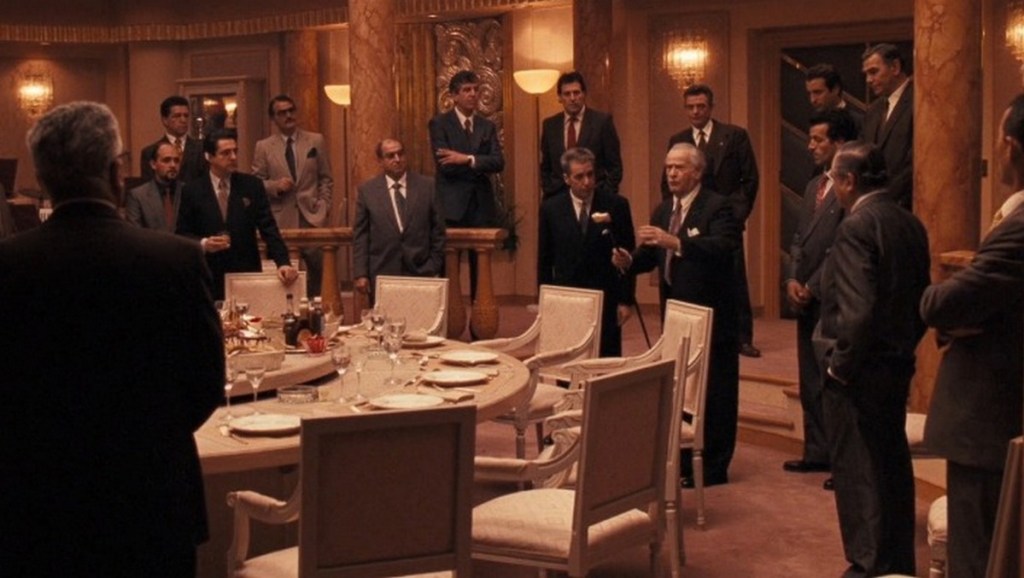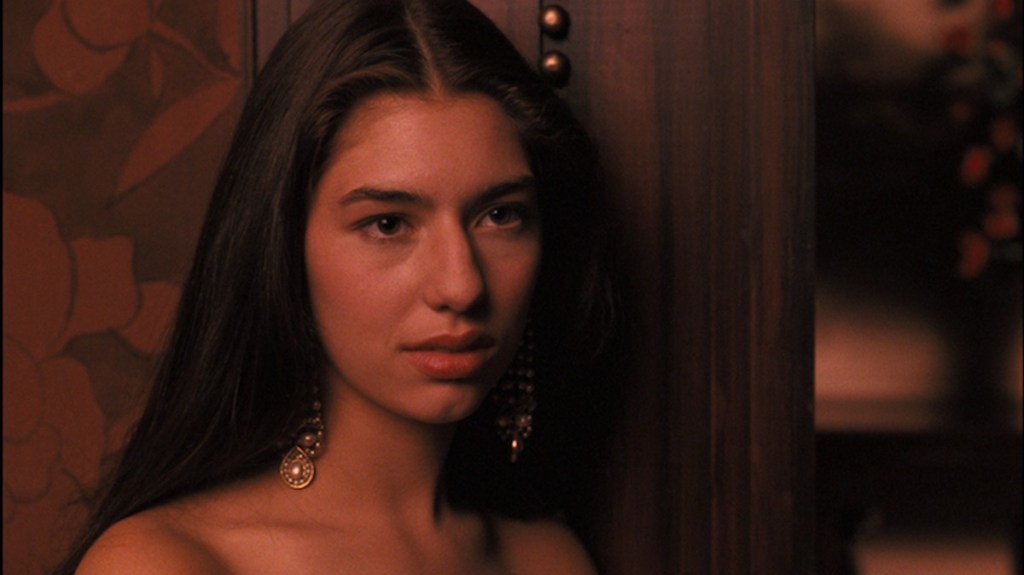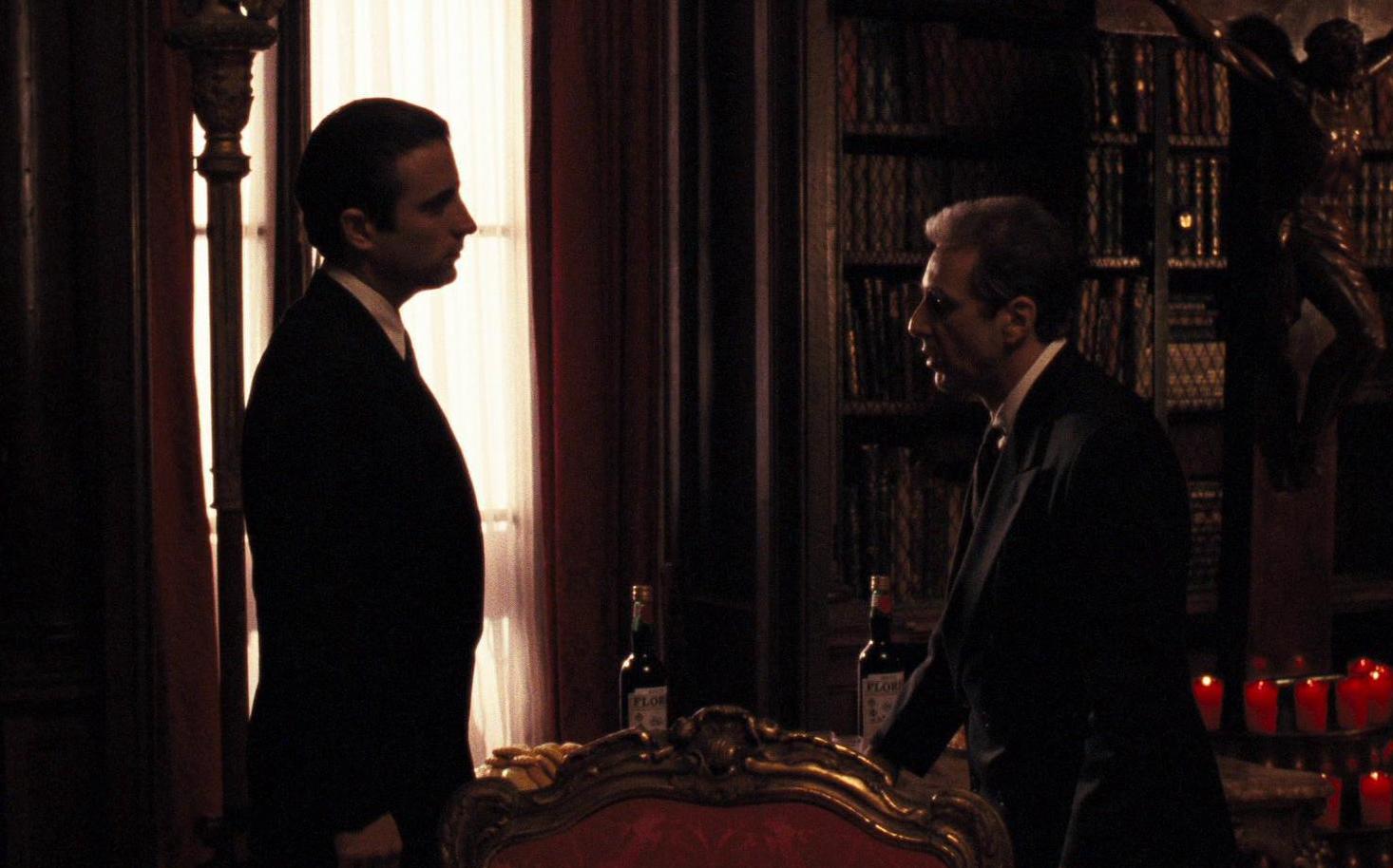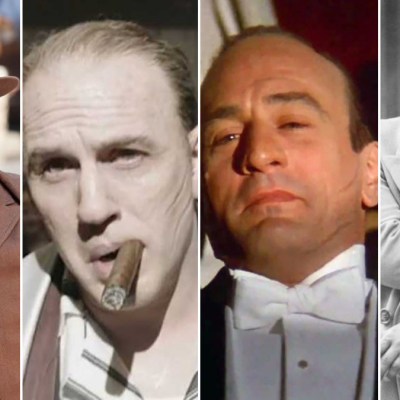This article contains spoilers for The Godfather Coda: The Death of Michael Corleone.
It’s been three decades since the story of crime lord Michael Corleone (Al Pacino) came to a bitter and lonely end in The Godfather Part III, with an aged Michael collapsing and dying alone in the courtyard of a Sicilian villa, his passing witnessed only by a small dog and seemingly no one left around him to care.
Michael’s passing also signaled the somewhat underwhelming end to one of cinema’s greatest sagas, in which two undisputed masterpieces were followed by a troubled third chapter that did not live up to its predecessors. Despite the challenges stacked against it and the film’s own internal issues, The Godfather Part III was worthy enough in many ways, more than initially acknowledged.
Meanwhile, director Francis Ford Coppola has undertaken a re-edit and restoration of Part III, retitling it Mario Puzo’s The Godfather, Coda: The Death of Michael Corleone. Coppola and writer Mario Puzo had originally titled the third movie The Death of Michael Corleone, but Paramount Pictures insisted on calling it Part III. The studio also gave Coppola just a year to make the film and meet a Christmas 1990 release date, leading to a hurried production that the director was never completely satisfied with.
With a brief run in theaters followed by a Blu-ray release, Coppola is now giving us a sense of what he originally hoped to accomplish with Part III, a film that he was reluctant to do for years. Much of the movie remains largely unchanged, to be honest, but the answer to one major question — should The Godfather Part III even exist? — is undoubtedly yes.
The Road to Part III
1974’s The Godfather Part II ended with Michael vanquishing all his enemies and traitors — including his own brother Fredo (John Cazale) — and consolidating his immense power at the cost of his soul. The last shot was of Michael sitting alone and brooding, without even the family he had sworn to protect around to comfort him. But Paramount Pictures had been after Coppola for years to make a third movie, even commissioning a strange script in 1979 that focused on Michael’s estranged son Tony working for the CIA and involving his family in a plot to assassinate a Central American dictator.
“Francis loved (Godfather author) Mario Puzo and Mario Puzo loved Francis; they were great collaborators together,” says Talia Shire, Coppola’s sister and the actress who played Michael’s sister Connie in all three films, during a Zoom interview with Den of Geek. “I don’t know actually what set (Part III) in motion. I’m not sure if it was an offer nobody could refuse, but I know that Francis loved the material always but I’m not sure what set this in motion.”
Following the success of the first two Godfather films and Apocalypse Now, Coppola had a stretch of bad luck at the box office that lasted for a decade, with failures like One from the Heart putting the acclaimed filmmaker into debt for years. Despite saying that he “absolutely didn’t want to make any more Godfathers even after the first one,” Coppola almost had no choice. “I was in much less of a strong position,” he told the New York Times. “Frankly, I needed the money, and I was coming out of a real financial doldrum where I had almost lost everything.”
So he and Puzo got to work crafting a story that seemed like the obvious one to tell: the tale of Michael Corleone’s quest for redemption, in the eyes of his family and God, all while making one last attempt to solidify his empire as a wholly legitimate international corporation.

The Godfather Part III’s complex plot — which is still complicated in the new version but a little more streamlined and easier to grasp — centers around Michael’s ambitious plan to take over an immense European real estate concern called Immobiliare. The Vatican, which is revealed as a wellspring of treachery and corruption underneath its pious surface, has a vast stake in Immobiliare but significant debts as well; by selling to the Corleone family, the Vatican can erase those debts while giving Michael the veil of legitimacy he craves.
“I imagined that that’s what Michael really wanted,” Coppola told Deadline, “And the irony that he does that with the Church, which is more corrupt than he is, and always has been, was too good.” Indeed, Michael learns that the cabal behind Immobiliare is a group of corrupt businessmen and criminals who are powerful enough to reach into the workings of the New York Mafia and turn elements of what used to be the Corleone family (personified by Eli Wallach’s Don Altobello) against Michael himself.
That’s where Michael’s nephew Vincent Mancini (Andy Garcia) comes in: the illegitimate son of Michael’s late brother Sonny (played by James Caan in the earlier films), Vincent is fiercely loyal to the family name. Hot-headed and drawn more to the gangster life than Michael’s legitimate empire, he quickly rises in the Corleone hierarchy until it becomes clear to Michael that Vincent can take over the original family business that he’s no longer interested in.
“Meeting Andy…you meet actors at rehearsal and you love them,” says Talia Shire, whose Connie in the third film is the family matriarch and very much one of Michael’s key advisers. “You’re kind of family and here’s a new member. I remember just loving Andy. He had a wild energy, which Connie sees as the essence of his father — (whose death in the first movie) she feels responsible for. She’s going to keep it going. She’s going to make Andy the new Don. And she does that certainly.”
Read more
But even Vincent’s climb to the top of the Corleone crime family is marked by what turns out to be a fatal flaw: the mutual attraction between him and his first cousin, Michael’s daughter Mary (played by the director’s daughter, Sofia Coppola. Michael insists that Vincent give up the relationship — which, let’s face it, is quite cringe-inducing already — if he takes over as godfather, a term which Vincent accepts.
The Sofia Factor
Sofia Coppola was not a professional actress when she took the role of Mary in The Godfather Part III to help her father out of a jam. Winona Ryder had been cast in the role initially, but dropped out just before the start of filming after showing up for work suffering from what doctors called complete exhaustion. Other actresses considered for the role, such as Laura San Giacomo, Annabella Sciorra and even Madonna were rejected by Francis Coppola as too old to play the character, which he envisioned as a teenager. But Sofia’s performance — in a role crucial to the story — was called out upon the film’s release by many critics, some in nasty personal tones, as the movie’s own fatal mistake.
Talia Shire says her experience on the first Godfather was similar in some ways to her niece’s unexpected dive into the saga. “That first one, you could ask, what do you need a sister for? Because it was already very politically complex,” she muses. “So I used to wonder what I was doing on that first one. But I believe that when Winona dropped out (of Part III) that the movie could have unraveled right there, just like that. It was Sofia who saved it, at a great cost to her that she did not deserve. But she saved it because it went forward and Francis was extremely focused.”
But Shire adds that the aftermath for Sofia — the storm of criticism she faced — was beyond the pale. “If you look at Pauline Kael’s review back then, she highlights Sofia as giving an excellent performance because she had an incredible innocence,” says Shire. “I liked her performance back then. What I didn’t like — and I have to tell you, I don’t want it to churn myself up because now it’s 30 years — but I was really furious with some of those hurtful things that were said. They were just…it went past what you felt was even critical anymore. It had moved into something that was almost vulgar.”

The Godfather, Coda: The Death of Michael Corleone cannot and does not change Sofia Coppola’s performance, but with some careful editing, it does perhaps bring out a little more of the innocence of both the actress and the character she’s playing. Individual viewers will have to decide for themselves whether, for example, her line readings are realistically how a girl her age would talk or the result of a young woman woefully inexperienced at reading dialogue.
“What I felt in (the new version), tremendously so, was the relationship between Connie and Mary,” says Shire. “It was beautifully symmetrical. Here’s the daughter of the last Mafia head and here’s the daughter of the new one. There was something extraordinary between those two women. One woman now is steeped in illusion; she has no intention of letting her brother out. And the other beautiful, innocent, young girl is…about to be victimized, like Iphigenia, led to her death.”
Just When He Thought He Was Out
The murder of Mary Corleone at the end of Part III — when she takes a bullet meant for her father outside a Sicilian opera house where her brother Tony has just made his triumphant debut — is the climax that all three movies in the series were building to. It’s still an intensely powerful, tragic moment: unlike the first two Godfather entries, where you watched Michael evolve into a cold, calculating, amoral monster, there is a sense in Part III that he is truly trying to turn his life around, reconnect with the people who once loved him and redeem himself spiritually and emotionally. He’s no hero (he tacitly encourages Vincent to engineer a round of murders in the same fashion as he did in the first two films), but for the first time in the saga you may find yourself pulling for him a little.
“There’s that beautiful scene of confession, with the Pope that’s going to be murdered, (where) Michael does feel he can live a different life,” says Shire. “This is about redemption and he can do it. That confessional scene is very beautiful. It resonates into the scene with Kay (Michael’s ex-wife, played again by Diane Keaton), when they go off on their little drive, that’s got a beautiful, romantic sweetness that I didn’t feel was there as much in the original version. Even though I know what the ending is, what I felt watching it this time was, ‘My God, he can do it. He can get out.’”
Read more
The new version, The Death of Michael Corleone, moves one crucial scene in which Michael bargains with the head of the Vatican Bank, Archbishop Gilday (Donal Donnelly), to gain control of the Church’s share of Immobiliare. Once occurring about 40 minutes into the movie, it now opens the new version and sets up the financial and political stakes immediately, providing more clarity to the Corleone family’s later interactions with the Vatican and the ruthless men behind Immobiliare.
“Tt was a very complex plot back then,” remarks Shire. “I think you understand it a bit more now because you’re clear that Michael truly is after spiritual redemption. But it’s more clear now that the Church itself, the Vatican is laundering money. So Michael goes to find redemption and finds himself in this particular undertow of criminality that’s in the Church. That was clearer this time, I think.”
“The higher I go, the crookeder it becomes,” says Michael at one point as Part III spirals toward its gripping third act, and it’s true: the archbishop that Michael confessed to becomes Pope and is promptly murdered when he begins cleaning up the Vatican Bank (the movie’s Vatican subplot is loosely based on actual events). Whether it’s street-level crime in the alleys of Little Italy, high-flying wheeling and dealing at Las Vegas casinos or negotiating with the shadowy power brokers behind a massive international real estate consortium, there is seemingly no end to the levels of corruption and greed that Michael Corleone finds; he can’t escape it no matter how hard he tries.

That is ultimately the tragedy of the film in both versions, The Godfather Part III and The Death of Michael Corleone, and also ultimately why — even though Coppola himself was unsure about doing it — the movie is a valid conclusion (or epilogue, as the director now says) to this profound saga that still provides us with a dark mirror image of the American Dream. The title of the new version is also profoundly ironic, since Coppola now denies Michael the release of death that the original film ended with. His suffering for his sins will go on.
For all its flaws — the problematic casting of Sofia Coppola, the absence of Robert Duvall as Tom Hagen due to a salary dispute, the labyrinthine plot that needs a few watches to fully comprehend — The Godfather Part III a.k.a. The Godfather, Coda: The Death of Michael Corleone has ultimately stood the test of time as a worthy epilogue to the story of Michael Corleone and his family. Both versions tell a story of redemption gone wrong and evil triumphant, and just when you thought you were out, they still have the power to pull you back in.
The Godfather, Coda: The Death of Michael Corleone is available now on Blu-ray and digital.




